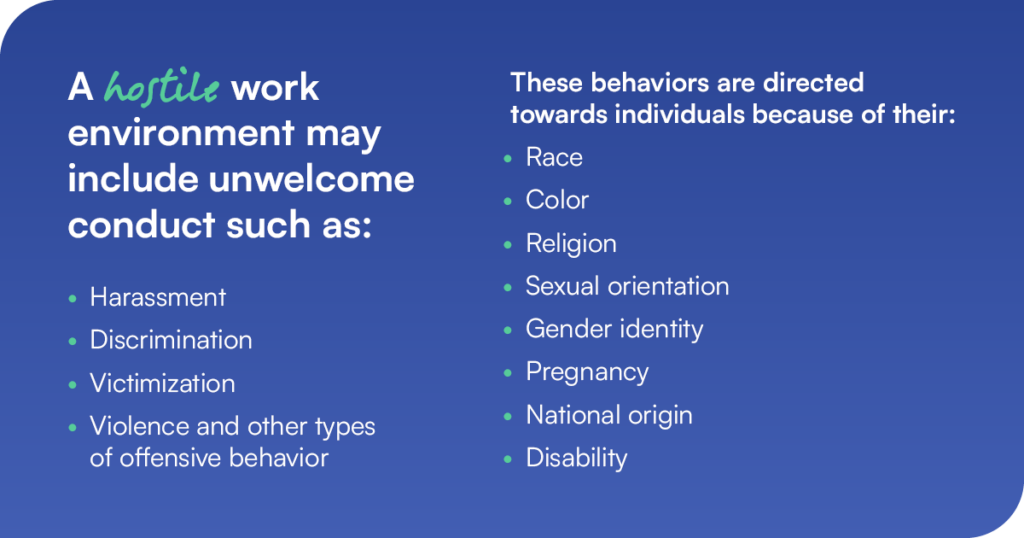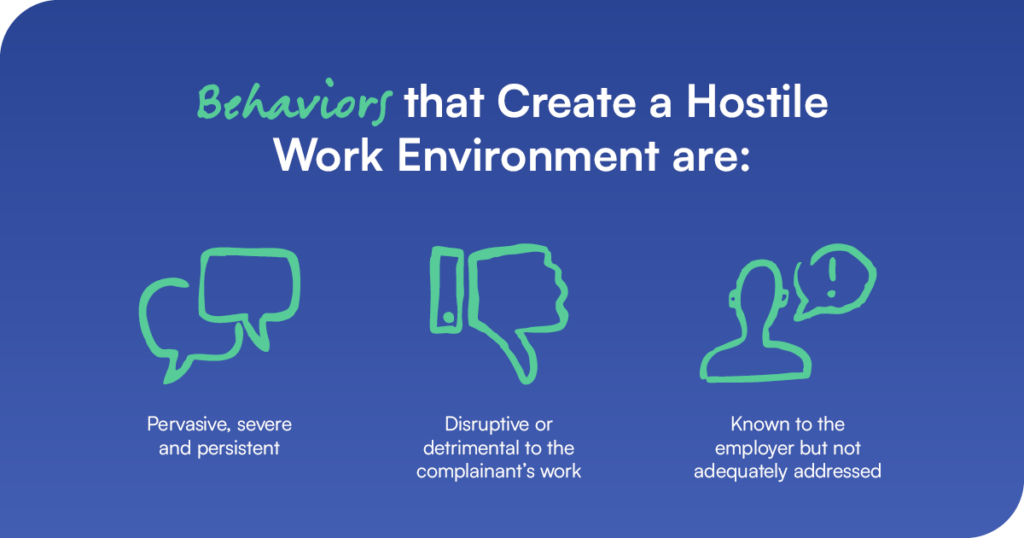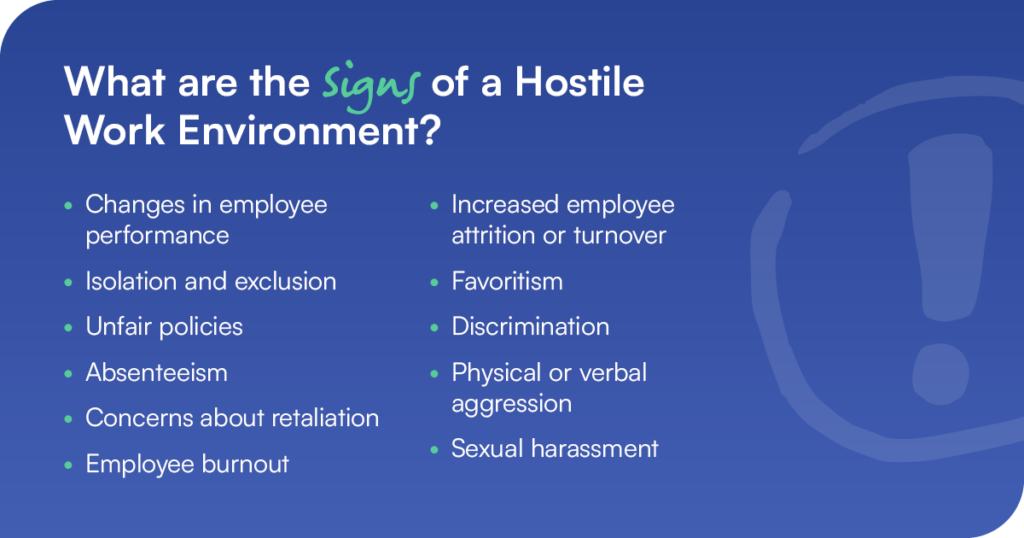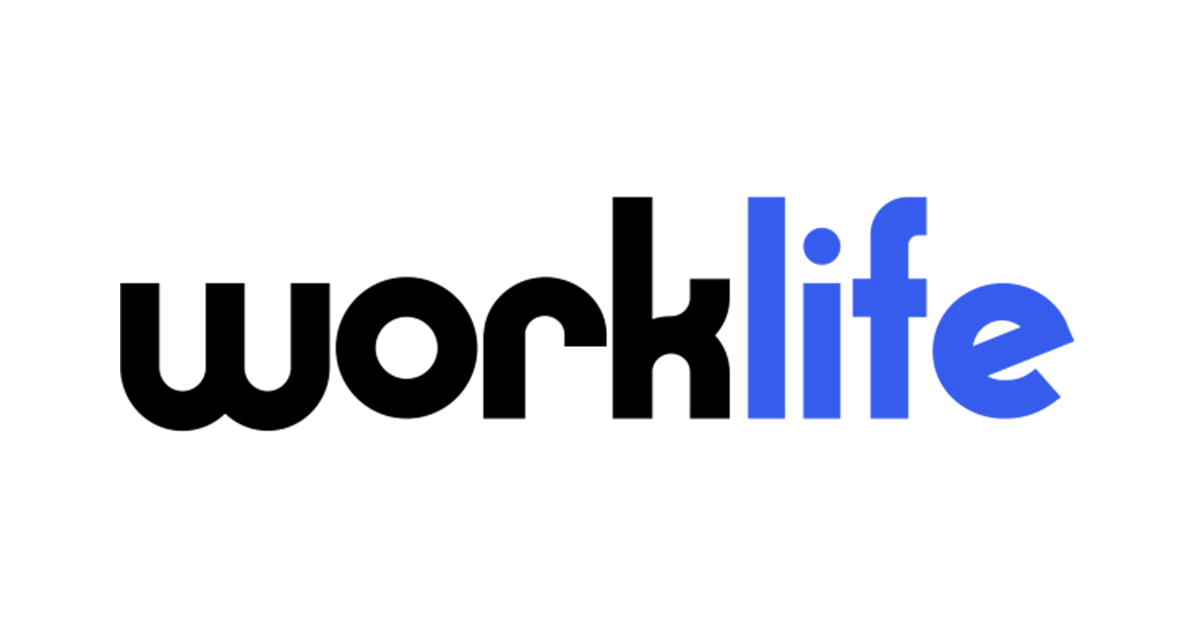A hostile work environment isn’t just unpleasant—it’s illegal. As an employer, it’s your responsibility to create a workplace where every team member feels safe. And if you don’t? You risk employee dissatisfaction, lack of engagement and turnover. Plus, it’s, you know, the right thing to do.
Let’s walk through our hostile workplace definition so you’re better equipped to navigate any issues that may arise. Then, review examples of examples of a hostile work environment and signs to watch out for.
What is a hostile work environment? Hostile Workplace Definition
A hostile work environment is defined as a workplace where unwelcome conduct creates an intimidating, offensive or abusive atmosphere, violating legal standards set by the EEOC. This may include unwelcome conduct such as:
- Harassment
- Discrimination
- Victimization
- Violence and other types of offensive behavior
These behaviors are directed towards an individual because of their:
- Race
- Color
- Religion
- Sexual orientation
- Gender identity
- Pregnancy
- National origin
- Disability
Learn More About Workplace Harassment and Employee Misconduct from HR Acuity’s 2023 Study
However, your employees encounter more than just their colleagues within a day. They may meet clients, customers or vendors. That begs the question, does the behavior only count if it’s coming from an internal team member? The answer is a resounding no. Anyone your team members interact with during work can contribute to a hostile work environment, and it’s your job to take action to protect every member of your team.

Why is Addressing a Hostile Work Environment So Important?
First and foremost, a hostile work environment is detrimental to your employee base and company culture. It can impact retention rates, engagement levels and employee referrals. In fact, 30% of employees who experience harassment have left their organization.
Addressing a hostile workplace environment is critical to improve the employee experience and increase employee satisfaction. But issues can only be dealt with when companies are aware of them, which isn’t always the case. According to the 2023 Workplace Harassment and Misconduct Insights, 42% of employees who experienced an incident of workplace harassment or misconduct did not report it.
Organizations are responsible for providing a safe, secure environment where their employees feel comfortable enough to speak up. And reported issues are essential to resolution and prevention of potential hostile work environments. Anonymous reporting tools encourage employee candor and gain insight into any workplace issue, including a hostile work environment. In fact, 72% of employees are comfortable reporting issues when they’re able to do so anonymously.
What qualifies as a hostile work environment?
To determine what constitutes a hostile work environment, let’s consider the legal requirements. A workplace qualifies as hostile when an employee is dealing with behavior that is:
- Pervasive, severe and persistent
- Disruptive or detrimental to the complainant’s work
- Known to the employer but not adequately addressed
Most importantly, the behavior must target an individual in a protected class to be seen as “hostile” from the perspective of the law. Let’s break down how this contributes to our hostile workplace definition.
According to the EEOC, workplace harassment becomes unlawful when “enduring the offensive conduct becomes a condition of continued employment.” It’s also important to note that the complainant does not have to prove there was a threat of firing, negative performance reviews or withheld assignments.

As an employee relations professional, it’s your job to get to the bottom of what’s going on. To do so, you’ll conduct a hostile work environment investigation (which sounds more intimidating than it is if you have HR Acuity!). But before you get started investigating, ask yourself if the behaviors cross the threshold outlined above. If so, it’s time to take action.
Once you’ve answered that question, you can begin your investigation if necessary. You’ll likely interview the complainant, witness(es) and subject(s).
The Importance of Creating a Psychologically Safe Workplace
It’s the job of employee relations to work towards creating a more equitable, psychologically safe environment. One of the best ways to do so is to demonstrate your steadfast commitment to diversity, equity and inclusion. It has never been more important to show that you’re dedicated to creating a workplace where all are celebrated.
Examples of a Hostile Workplace
Did you know that a hostile environment in the workplace can be the result of any mix of discriminatory or inappropriate behavior? Here are some common conduct examples of a hostile work environment:
- Offensive, discriminatory or racist jokes
- Insults, slurs, name-calling and offensive nicknames
- Unwanted physical contact, assaults or threats
- Mockery, intimidation, hazing or ridicule
- Retaliation against team members who come forward with discrimination concerns
- Use of sexually explicit language
- Sexually suggestive pictures, objects or behavior
- Ongoing microaggressions
- Exclusionary practices or behaviors towards a certain demographic or group
- Sabotaging work, such as deleting a presentation or giving a poor review
Remember: What each example of a hostile work environment has in common is that it’s targeting a protected group.
What is Not Considered a Hostile Work Environment?
Hostile workplace examples give you a feel for what to look out for—but studying what doesn’t qualify is just as helpful. An environment that’s merely unpleasant or irritating wouldn’t be considered a hostile work environment under the EEOC’S guidelines. Personality conflicts, rudeness, annoyances, pettiness or isolated incidents also don’t qualify as elements of a hostile work environment.
Some anti examples of a hostile workplace include:
- A disagreement with a coworker over what the team should order for lunch.
- Frustration with a coworker for leaving the office sink a mess.
- Intrapersonal conflict that doesn’t include discrimination or harassment.
- Not getting a promotion because your most recent performance review wasn’t great. (Provided it’s not connected to retaliation, of course.)
- A coworker that isn’t communicative or friendly to anyone.
Signs of a Hostile Work Environment
Sometimes hostile work environment investigations pop up without any warning and surprise you. Other times, there are indicators that signal something’s not quite right. In the latter case, you can proactively intervene before the situation escalates. Potential signs of a hostile work environment include (but are not limited to):
- Changes in employee performance
- Isolation and exclusion
- Unfair policies
- Absenteeism
- Concerns about retaliation
- Increased employee attrition or turnover
- Favoritism
Of course, connecting the dots that these signs indicate a broader issue can be tricky. Other times, hostile work environment signs are more obvious like:
- Discrimination
- Physical or verbal aggression
- Sexual harassment

Protect Your Employees (and Company’s Reputation) with HR Acuity
Now armed with a hostile workplace environment definition, you’re better equipped to navigate any scenarios that arise.
Once a case of a hostile work environment has been reported, investigations must be treated fairly and consistently. An investigations management solution like HR Acuity can ensure everything is properly documented, that processes are standardized and no detail is left out.
HR Acuity is the industry-leader in employee relations case management and workplace investigations software. With our award-winning employee case management software, we empower hundreds of leading organizations to become more efficient, organized and transparent.
To learn more about how HR Acuity can help create a more trusted workplace, schedule a demo today.




